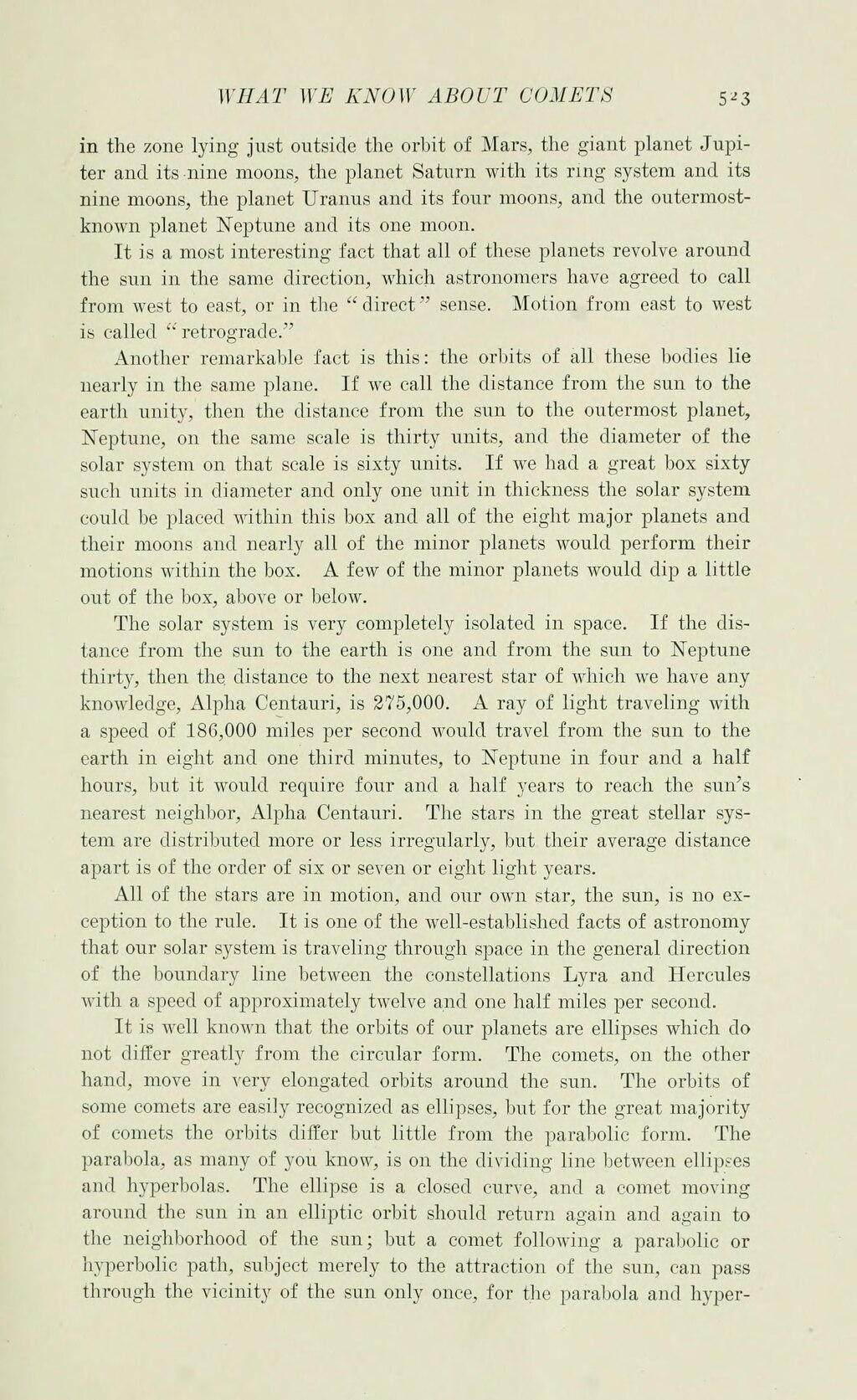WHAT WE KNOW ABOUT COMETS s^S
in the zone lying just outside the orbit of Mars, the giant planet Jupi- ter and its nine moons, the planet Saturn with its ring system and its- nine moons, the planet Uranus and its four moons, and the outermost- known planet Neptune and its one moon.
It is a most interesting fact that all of these planets revolve around the sun in the same direction, which astronomers have agreed to call from west to east, or in the " direct " sense. Motion from east to west is called "retrograde.'^
Another remarkable fact is this: the orbits of all these bodies lie^ nearly in the same plane. If we call the distance from the sun to the- earth unity, then the distance from the sun to the outermost planet^ Neptune, on the same scale is thirty units, and the diameter of the- solar system on that scale is sixty units. If we had a great box sixty such units in diameter and only one unit in thickness the solar system could be placed within this box and all of the eight major planets and their moons and nearly all of the minor planets would perform their motions within the box. A few of the minor planets would dip a little- out of the box, above or below.
The solar system is very completely isolated in space. If the dis- tance from the sun to the earth is one and from the sun to Neptune- thirty, then the distance to the next nearest star of which we have any knowledge. Alpha Centauri, is 275,000. A ray of light traveling with< a speed of 186,000 miles per second would travel from the sun to the- earth in eight and one third minutes, to Neptune in four and a half hours, but it would require four and a half years to reach the sun^s nearest neighbor, Alpha Centauri. The stars in the great stellar sys- tem are distributed more or less irregularly, but their average distance- apart is of the order of six or seven or eight light years.
All of the stars are in motion, and our own star, the sun, is no ex- ception to the rule. It is one of the well-established facts of astronomy that our solar system is traveling through space in the general direction of the boundary line between the constellations Lyra and Hercules with a speed of approximately twelve and one half miles per second.
It is well known that the orbits of our planets are ellipses which do not differ greatly from the circular form. The comets, on the other hand, move in very elongated orbits aroimd the sun. The orbits of some comets are easily recognized as ellipses, but for the great majority of comets the orbits diifer but little from the parabolic form. The parabola, as many of you know, is on the dividing line between ellipses and hyperbolas. The ellipse is a closed curve, and a comet moving around the sun in an elliptic orbit should return again and again to the neighborhood of the sun; but a comet following a parabolic or hyperbolic path, subject merely to the attraction of the sun, can pass through the vicinity of the sun only once, for the parabola and hyper-
�� �
